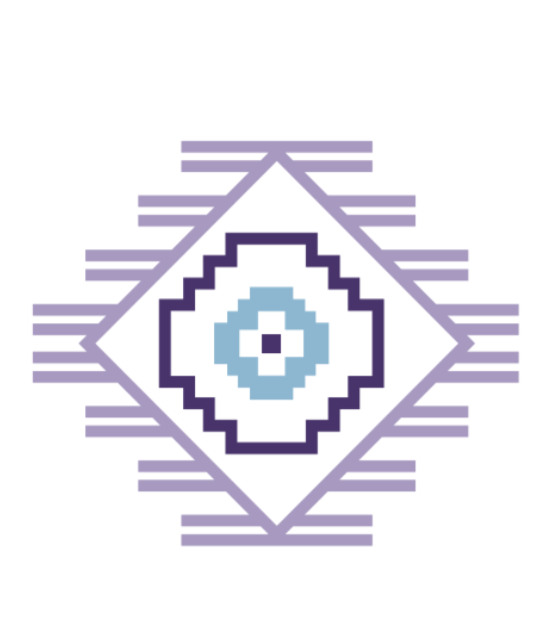NIWRC Indigenous Community-Based Research Priorities
To comprehensively understand the essential and critical needs within the movement to end violence against Indigenous women, families, and relatives, we must, first and foremost, make safe spaces and ASK! The process of creating safe spaces, asking and actively listening, and taking critical action steps show NIWRC’s Research & Evaluation commitment to our Indigenous Nations and communities!
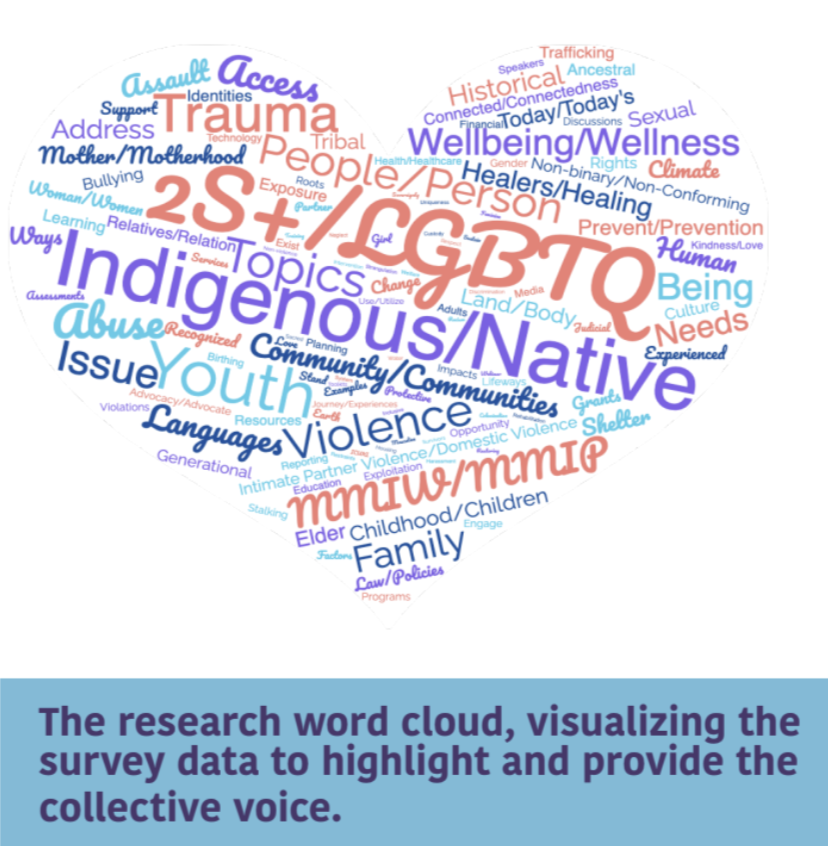 Our Indigenous women, families, and relatives’ voices are heard, acted upon, and shown through developing specific resources which is vital to this movement. NIWRC Research & Evaluation braids culturally specific community-based research and evaluation tools into our foundational values and ethics, represented within the four R’s—Relevance, Responsibility, Reciprocity, and Respect.
Our Indigenous women, families, and relatives’ voices are heard, acted upon, and shown through developing specific resources which is vital to this movement. NIWRC Research & Evaluation braids culturally specific community-based research and evaluation tools into our foundational values and ethics, represented within the four R’s—Relevance, Responsibility, Reciprocity, and Respect.
Some new ways NIWRC is expanding into research spaces include the NIWRC Research & Evaluation launch of the first NIWRC in-house empirical Institutional Review Board (IRB) approved research project Indigenous Intersectionality on Colonial Gender-Based and Land Violence. This study aims to understand how Indigenous birthing people1 aged 18+ view their connection to Earth and how colonial violence to their community lands has affected health and wellness. Within evaluation spaces, NIWRC launched the first NIWRC in-house comprehensive evaluation for our Women Are Sacred 2023 Conference to inform future planning and development.2
As NIWRC continues to expand into research and evaluation spaces, it is critical to understand our Indigenous Nations’ and community needs, addressing, preventing, and ending violence against Indigenous women, families, and relatives. Knowledge of needs provides the platform for the most meaningful research and evaluation, relevant and accessible resources, training and technical assistance, policy reforms, and systemic changes for the movement.
This is why NIWRC Research & Evaluation is excited to share the NIWRC Research Priorities. We developed the Research Priorities using the Representing Community Voice Survey, distributed through all NIWRC communication platforms, including all social media outlets and the NIWRC email listserv. We received an excellent response from the movement! Mvto (Thank you) to everyone who participated in the survey! We then developed a word cloud using the survey data to highlight and provide the collective voice. Based on the research survey analysis and the developed word cloud, we created the following six Research Priorities to guide the development of Research & Evaluation resources. The Research Priorities are not in any specific order, as each priority is just as important as the others, hence the representation of circular and interconnectedness. Traditional Muscogee Nation art meanings inspired the graphic design.
Indigenous Land/Body Violence surfaces knowing that Indigenous women and relatives inherently are connected to each other and to land, waters, air, and biodiversity that sustains the circles of life. As we know, this connection has been disrupted within the spectrums of systemic violence; thus, we must advocate for an increased understanding of healing and action steps to restore holistic wellness to the land and body.
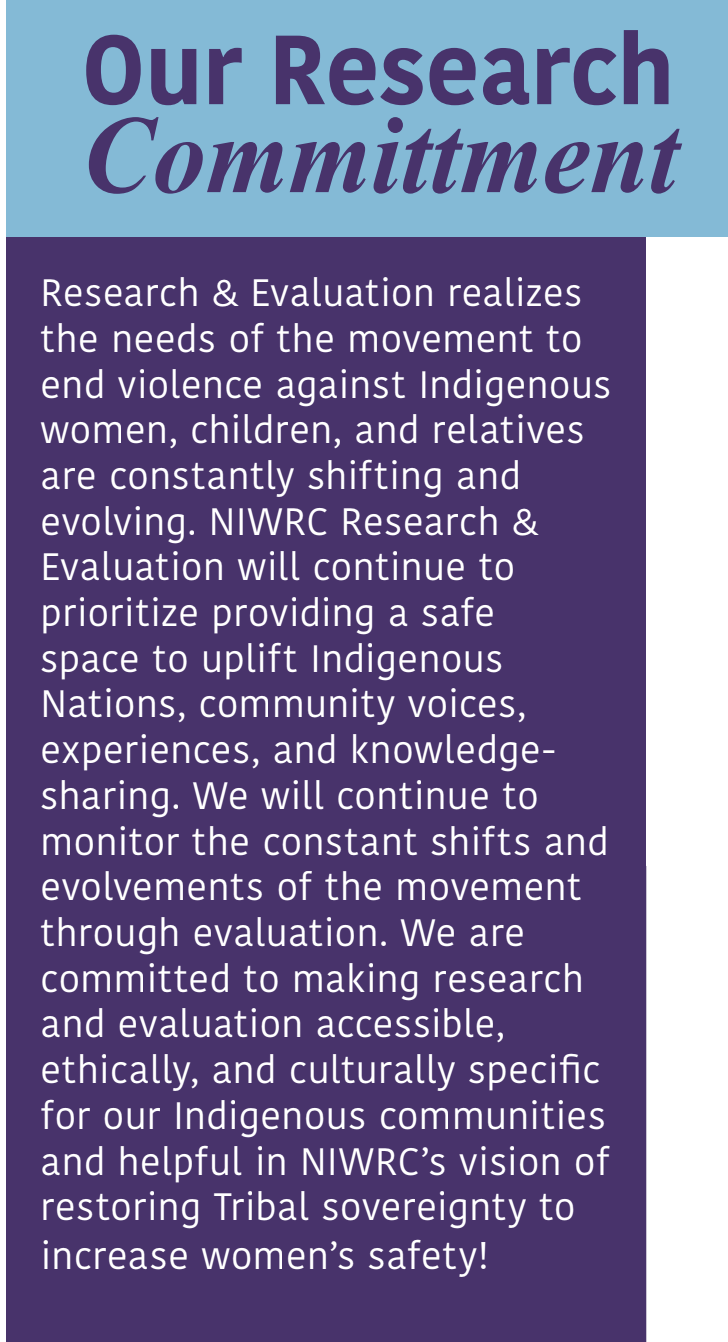 Ending Violence & Abuse brings forth the spectrums of violence that have disrupted our Indigenous ways of being since colonial contact. Understanding the roots of violence, which is colonization, has disrupted Indigenous knowledge(s)3 and values, as well as holistic wellness. The spectrum of violence can happen in all intersections of life, as we are all relatives. Understanding and advocating for comprehensive social, systemic, and policy changes need to be addressed to end violence and abuse and to respect Indigenous ways of being.
Ending Violence & Abuse brings forth the spectrums of violence that have disrupted our Indigenous ways of being since colonial contact. Understanding the roots of violence, which is colonization, has disrupted Indigenous knowledge(s)3 and values, as well as holistic wellness. The spectrum of violence can happen in all intersections of life, as we are all relatives. Understanding and advocating for comprehensive social, systemic, and policy changes need to be addressed to end violence and abuse and to respect Indigenous ways of being.
Indigenous Community Needs reflect our communities’ needs and should be understood in totality. Culturally appropriate evaluation of needs, like needs assessments, for comprehensive understanding, implementation, and planned action steps to address the findings are much needed throughout our Indigenous communities. All Indigenous communities may differ in needs, as it is essential not to predetermine the needs but to let the community voices speak for themselves within the findings for developing appropriate resources and action steps. Needs such as accessibility to language revitalization, shelter, safe housing, education and educational funding, program development, management, and sustainability are examples of many needs from the NIWRC Representing Community Voice Survey findings.
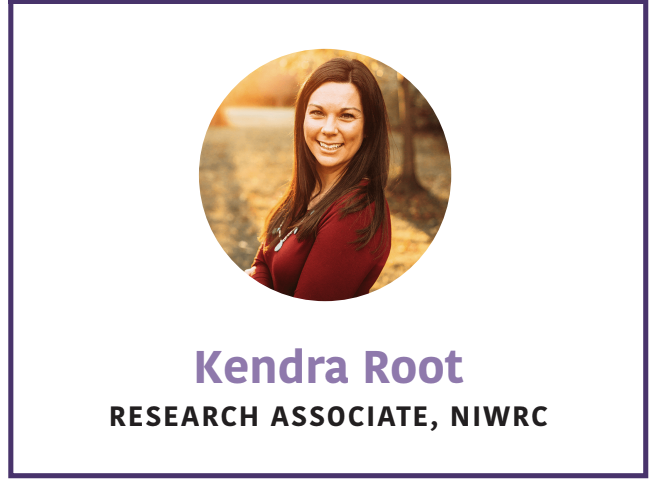 Indigenous Youth Violence & Trauma brings to life our Indigenous values of providing for our future generations. Indigenous communities have been subjected to disproportionate generational violence(s) and trauma(s). Engaging our Indigenous youth in nonviolent ways bears our Indigenous values and traditions. This engagement will aid in understanding youth trauma and violence, what those effects are on our Indigenous youth, the pathways of healing, define the needs of our youth, what accessibilities are lacking, accessing resources such as healthcare and traditional ways of healing, shelter, fair and equal justice within the justice systems, educational systems, as well as upholding systemic policies, like that of Indian Child Welfare Act (ICWA) to provide Indigenous children the inherent right to their health and safety and to maintain Indigenous morals and values, cultures, traditions, and languages.
Indigenous Youth Violence & Trauma brings to life our Indigenous values of providing for our future generations. Indigenous communities have been subjected to disproportionate generational violence(s) and trauma(s). Engaging our Indigenous youth in nonviolent ways bears our Indigenous values and traditions. This engagement will aid in understanding youth trauma and violence, what those effects are on our Indigenous youth, the pathways of healing, define the needs of our youth, what accessibilities are lacking, accessing resources such as healthcare and traditional ways of healing, shelter, fair and equal justice within the justice systems, educational systems, as well as upholding systemic policies, like that of Indian Child Welfare Act (ICWA) to provide Indigenous children the inherent right to their health and safety and to maintain Indigenous morals and values, cultures, traditions, and languages.
Indigenous LGBTQ/2S+ captures the need for safe, equitable, and inclusive spaces for Indigenous LGBTQ/2S+ relatives. Considering historical and present systemic policies enacted that impede human rights, it is critical to understand the current violence(s), substantial trauma(s), Tribal sovereignty protections, and healing practices.
Trauma Healing & Protection presents itself within the findings as a result of historical and generational violence and trauma(s) that exist within our Indigenous communities. Understanding the impacts of historical and generational trauma(s) from the spectrum of violence(s) provides a framework for culturally appropriate community-defined resources for healing, protection, and prevention. There is substantial knowledge of historical and generational trauma(s); therefore, using this knowledge to move Indigenous communities toward healing, protection, and prevention is the prime concern.
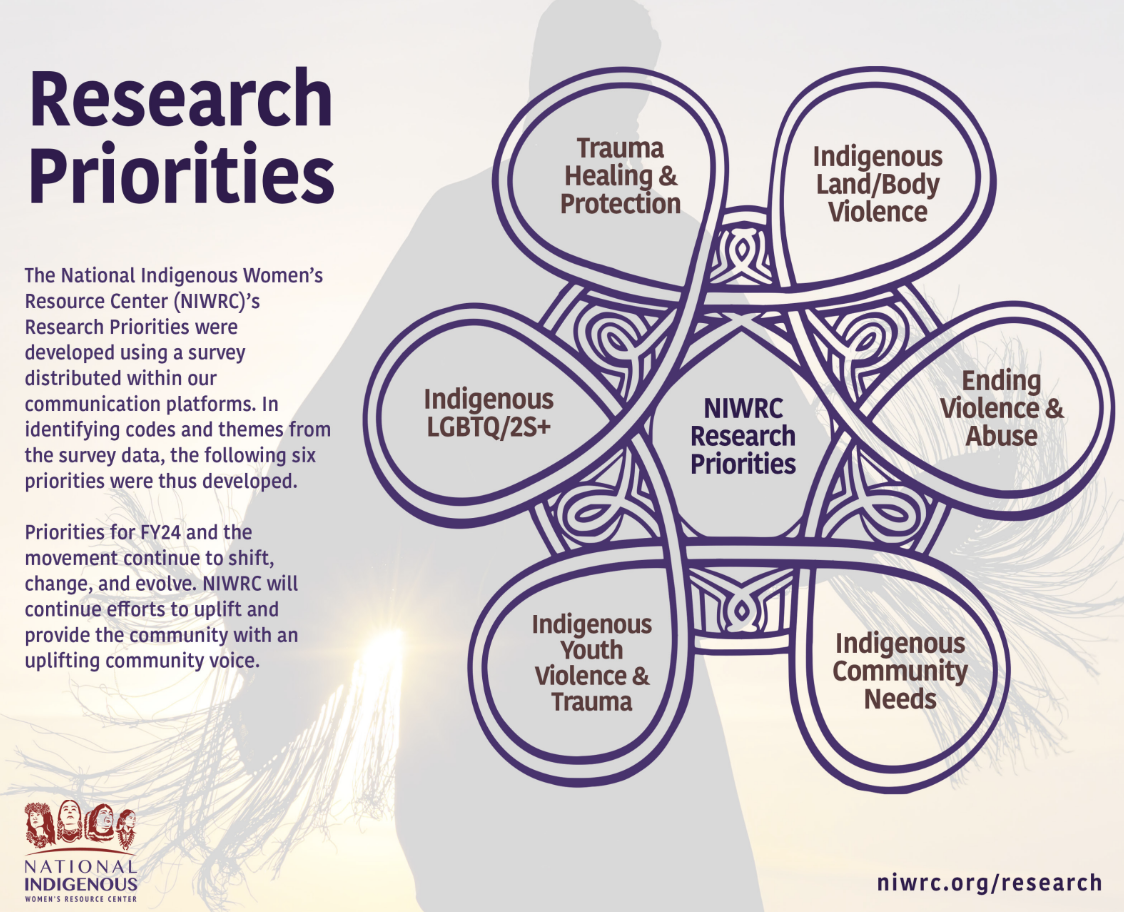
1 Birthing person: Someone who gives birth, regardless of theirgender identity, which may be female, male, nonbinary, or other. bit.ly/4bJlLwj
2 Although overlapping in many areas of thought, research and evaluation are different. Learn ways research and evaluation differ: bit.ly/3xJ3i4b.
3 Indigenous knowledge(s), also known as IK, “refers to the traditional knowledge systems, practices, and beliefs passed down from generation to generation within Indigenous communities” (p.287) Yip, S. Y., & Chakma, U. (2024). The teaching of indigenous knowledge and perspectives in initial teacher education: A scoping review of empirical studies. Journal of Further and Higher Education, 48(3), 287–300. https://doi.org/10.1080/0309877x.2024.2327029
